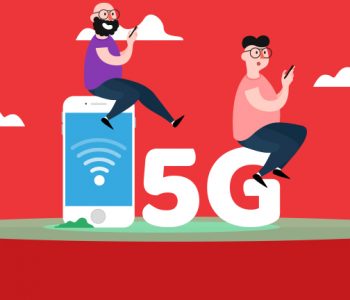 Uncategorized
Uncategorized
How Fast Is 5G? What Is 5G? 5 Things…
We have certainly come a long way from the first generation of wireless technology when analog frequency for speech and data transmission meant calls dropped frequently and voice quality was poor. You would have to compare it to the currently common 4G technology to understand how far we have come – while maximum speed for 1G was 2.4kpbs, the maximum speed for 4G by the best broadband service is 100mpbs. And when you use fiber technology, internet speed can scale as high as 200mbps!
5G is the latest generation mobile network that promises not only high-speed internet but also low latency and better reliability. This technology is what’s going to power your smartwatches, phones, cars, and other IoT devices. But what is 5G and how fast is it? Here’s all that you wanted to know about the fifth-generation wireless network technology:
What is 5G?
Just as 4GLTE supplanted 4G, 5G is the latest technology that’s set to replace 4GLTE. The technology uses 6 spectrum and millimeter-wave frequency – a spectrum that’s somewhere in the middle of microwave and infrared waves. The frequency for mm-wave is between 30 GHz and 300 GHz. This frequency not only allows for high-speed internet but also better quality videos and opens up possibilities that were previously only imagined in sci-fi movies.
The problem, however, with mm-wave is that these high-frequency waves cannot travel long distances. This means that devices working on the mm-wave frequency will have to be very close to a 5G node to catch a signal. And that is why 5G must operate on both sub 6 spectrum and mm-wave.
How Fast Is 5G?
If tech companies are to be believed, 5G is likely to be a hundred times faster than 4G, i.e., if 4G speed tops at 100 Mbps, with 5G it is likely to be 10Gbps. To explain this in real-life terms, you can download a 2-hour movie in less than 4 seconds on 5G. But high-speed internet is likely to open up possibilities that go far beyond entertainment.
For example, 5G can revolutionize the health sector, making treatment and diagnosis accessible to remote villages. 5Gs low latency can help robots synchronize remotely and enable virtual reality live broadcasts. It is also likely to affect the automobile industry, allowing robots to detect hazards better and even interact with signage.
What’s the Status Of 5G Across the World?
At the annual Snapdragon Tech Summit last year, there were murmurs about 5G being ready for the market by 2019. In the US, there have been instances of 5G coverage in some places such as Dallas, Houston, and Kansas City, but is unlikely to become mainstream before 2020.
In Canada, cellphone networks are testing 5G, while Telus Mobility will make the technology available to its customers by 2020. 5G is now available in the UAE this year through Etisalat.
What’s The Status of 5G in India?
The Telecom Authority of India had set a base price of $70 million per megahertz for the primary band of 5G services. However, this was found to be too expensive who requested a review of these prices. This request was, however, declined. There are also discussions about giving spectrum for 5G in the 25GHz and 28GHz bands. The government has also cleared the way of allowing mobile operators to conduct 5G spectrum trial.
Does this Mean that 4G falls by the Wayside?
On the contrary! 4G is likely to become much more efficient than it currently is, especially in places where 5G will take longer to reach. Besides, 4G will coexist with 5G. It is also likely to ease 4G congestion and help us reach out to rural heartlands and become the best high-speed internet provider!
